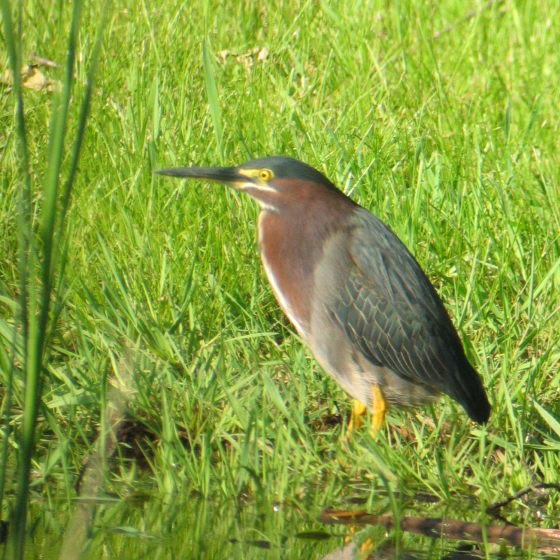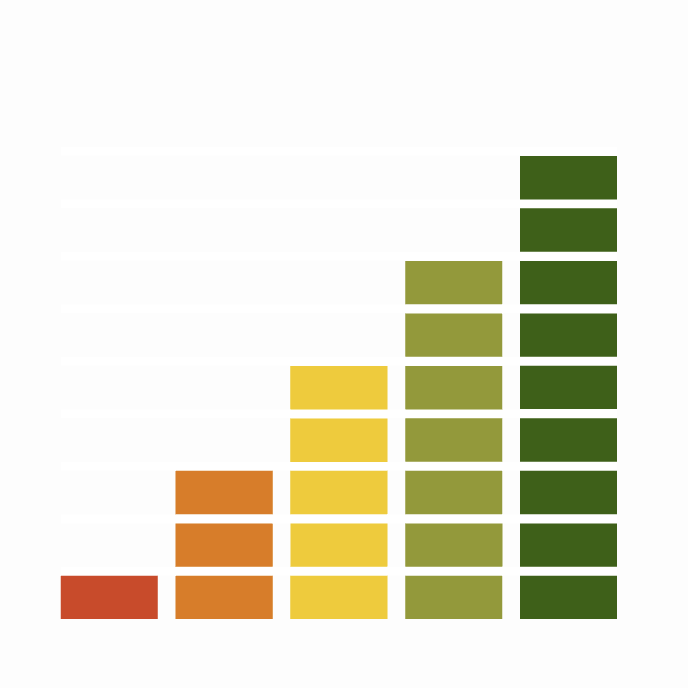Green Heron

Introduction
An extremely rare visitor from North America, the habit of this small, dark, heron of ejecting a stream of white defecation as it flies away, leads to alternative names such as "shite-polk" and "chalk-line".
One of the few tool-using birds, Green Heron commonly drops bait (such as bread crusts, insects, twigs, or feathers) onto the surface of the water and grabs the small fish that are attracted.
With just a handful of records, it perhaps no surprise that a long-staying individual at the Lost Gardens of Heligan, Cornwall – which stayed from 6 October to 1 December 2010 – attracted crowds of birders.

Key Stats
Status and Trends
Conservation Status
Population Size
Population Change
Population trends of this scarce species are not routinely monitored.
Distribution
This species is a rare vagrant and was recorded during Bird Atlas 2007–11 as shown on the map.
Occupied 10-km squares in UK
2007/08–10/11
or view it on Bird Atlas Mapstore.
Distribution Change
This vagrant is too rarely reported to map distribution change.
Change in occupied 10-km squares in the UK
Seasonality
This species has been too rarely reported to BirdTrack during 2011–22 to properly assess seasonality.
Movement
Britain & Ireland movement
Biology
Survival and Longevity
Survival is shown as the proportion of birds surviving from one year to the next and is derived from bird ringing data. It can also be used to estimate how long birds typically live.
Classification, names and codes
Classification and Codes
- Order: Pelecaniformes
- Family: Ardeidae
- Scientific name: Butorides virescens
- Authority: Linnaeus, 1758
- BTO 2-letter code: HR
- BTO 5-letter code: GRBHE
- Euring code number: 1070
Alternate species names
- Czech: volavka zelenavá
- Danish: Krabbehejre
- Dutch: Groene Reiger
- Estonian: punakael-väikehaigur
- Finnish: amerikankyyryhaikara
- French: Héron vert
- German: Grünreiher
- Hungarian: zöld gém
- Icelandic: Grænhegri
- Italian: Airone verde
- Latvian: zalais garnis
- Lithuanian: žalsvasis naktikovis
- Norwegian: Grønnrygghegre
- Polish: czapla zielona
- Portuguese: socó-mirím
- Slovak: caplicka zelenkavá
- Slovenian: ameriška zelena caplja
- Spanish: Garcilla Verde
- Swedish: grönryggig häger
- Welsh: Crëyr Gwyrdd
More Evidence
More evidence from Conservation Evidence.com
Partners
Citing BirdFacts
If you wish to cite particular content in this page (e.g. a specific value) it is best to use the original sources as linked in the page. For a more general citation of the whole page please use: BTO (20XX) BirdFacts Species: profiles of birds occurring in the United Kingdom. BTO, Thetford (www.bto.org/birdfacts, accessed on xx/xx/xxxx).

